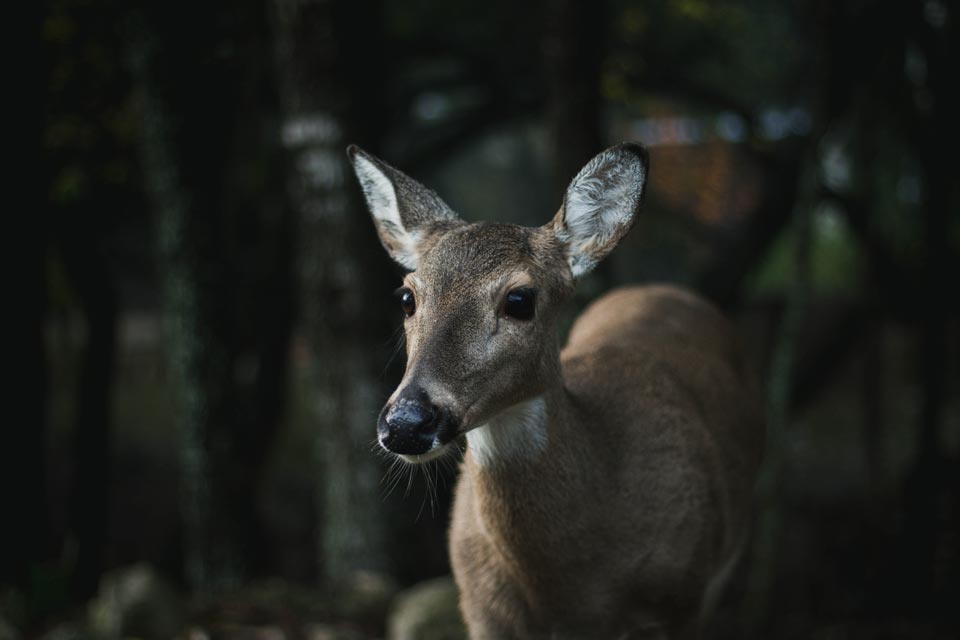It’s getting pretty late in the season to catch fawns. The tail end of a fawn as it leaves you in the dust is now the norm. Fawns reign in the 50-yard-dash event from here on out. But we are still out looking and hoping for a late win.
The good thing is when you are out “looking,” you also “see” a lot of cool stuff.
Case in point, the last day I spent in the field. The nearest study area for me is 2.5 hours away. Unless you are working with bats, field work usually requires an early start. The alarm was set for 0430. So by the time I reached the study area, I had been up for what seemed like half a day already. But the day was just beginning.
As we patrolled our route searching for little chocolate patches with white spots, we chatted about that stuff we had seen over the course of the last few weeks.
Surprisingly, we had not spotted a bear. I was riding shotgun when the truck came to a stop and the driver (we’ll just call him Bret) demanded I get out of the truck.
Geesh! How bossy. And that’s what I told him but I got out.
When I rounded the front of the truck, I gasped in delight. Crossing the road was this beautiful eastern box turtle (Terrapene carolina). After snapping a few pictures, we sexed and aged this handsome fellow. A quick scute count put him at about 20 years old. Given a box turtle can live over 80 years, he was just a young’n.
It wasn’t even 10am and it was a good day already!

As we headed up the mountain, a flick of bright orange caught my eye. A Baltimore oriole (Icterus galbula) was darting from bush to bush. Too fast for me and my camera, I admired him through my binoculars.
Since our sunny-colored distraction caused us to halt our progress again, we scanned the surrounding hillsides and we noticed a raptor perched in a snag. We focused our attention and binoculars in that direction. Banded tail, streaky brown, smaller than a red-tailed, “short” legs – Broad-winged hawk!
A pattern was beginning to emerge: Box turtle, Baltimore oriole, Broad-winged hawk. “B” critters! Maybe a Bear would be next. We dropped down into a bottom where the light was soft and filtered. As we climbed back up, I yelled “STOP!” An odd shape on a dead tree branch caught my eye.

That soft light was gently falling on the back of a barred owl (Strix varia). It was spectacularly beautiful, not because it was striking or bold but because it was silent and unobtrusive. Beauty that must be discovered in the quiet of the forest in the soft light falling through the trees.

We were on a roll now. Four “B” species and counting! A flurry of activity got our attention and a brood of turkeys (Meleagris gallopavo) flushed into the tree branches. We stopped to listen to mamma call her poults. Ok, classifying a brood of turkeys is stretching the “B” thing but just go with it.

Our list was getting too long to keep track of and the day was only half over. So Bret whipped out a sharpie and wrote our finds on the closest thing handy – a cooler!

By the end of the day, we added a ruffed grouse (Bonasa umbellus), eastern American toad (Bufo Americanus) tadpoles, Butterflies (red-spotted purples, Limenitis arthemis astyanax, I believe), and a brown thrasher (Toxostoma rufum).

Unfortunately, no bears were added to the list and no fawns were added to the project either. I got the classic view (tail end running away through a tangle of brush on rocky ground 10+ yards ahead of me) of the only fawn we saw that day.
Oh well, there were “cooler” critters in the woods today.
-Jeannine Fleegle, Biologist
PGC Deer and Elk Section
If you would like to receive email alerts of new blog posts, subscribe here.
And Follow us on Twitter @WTDresearch
